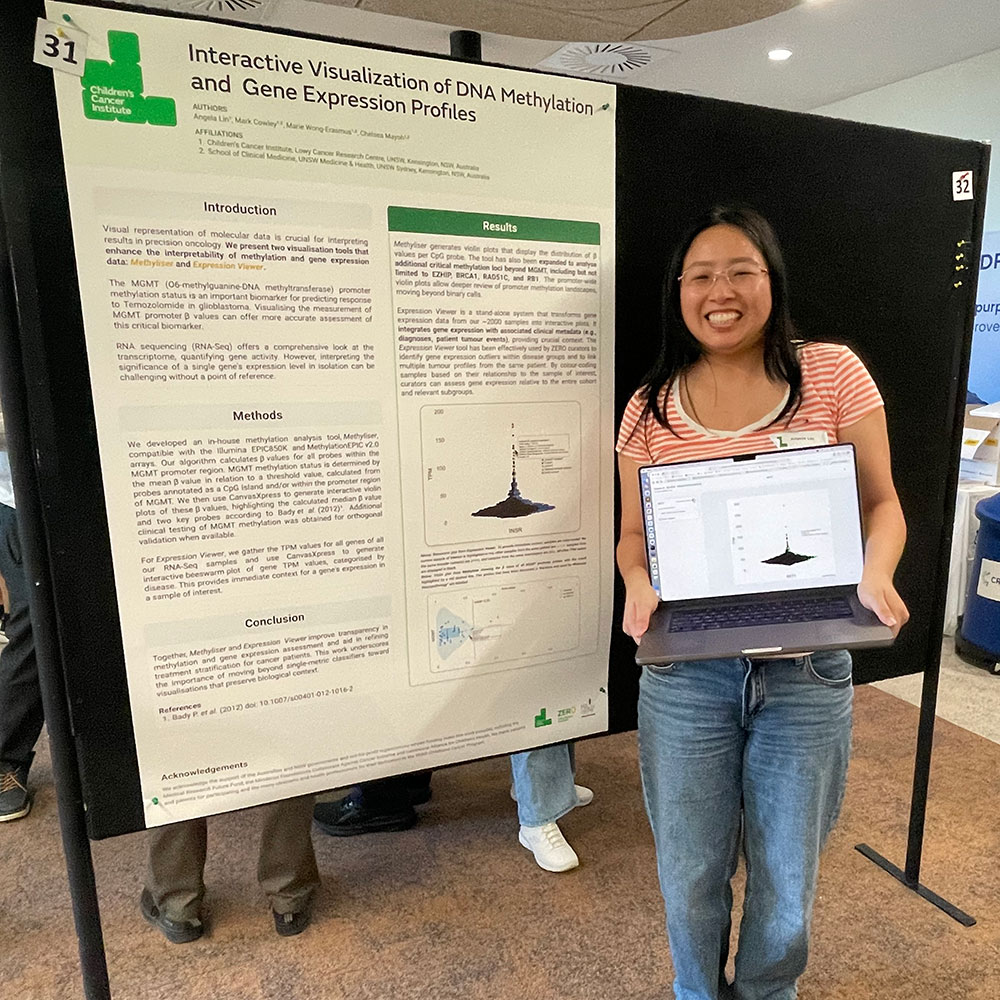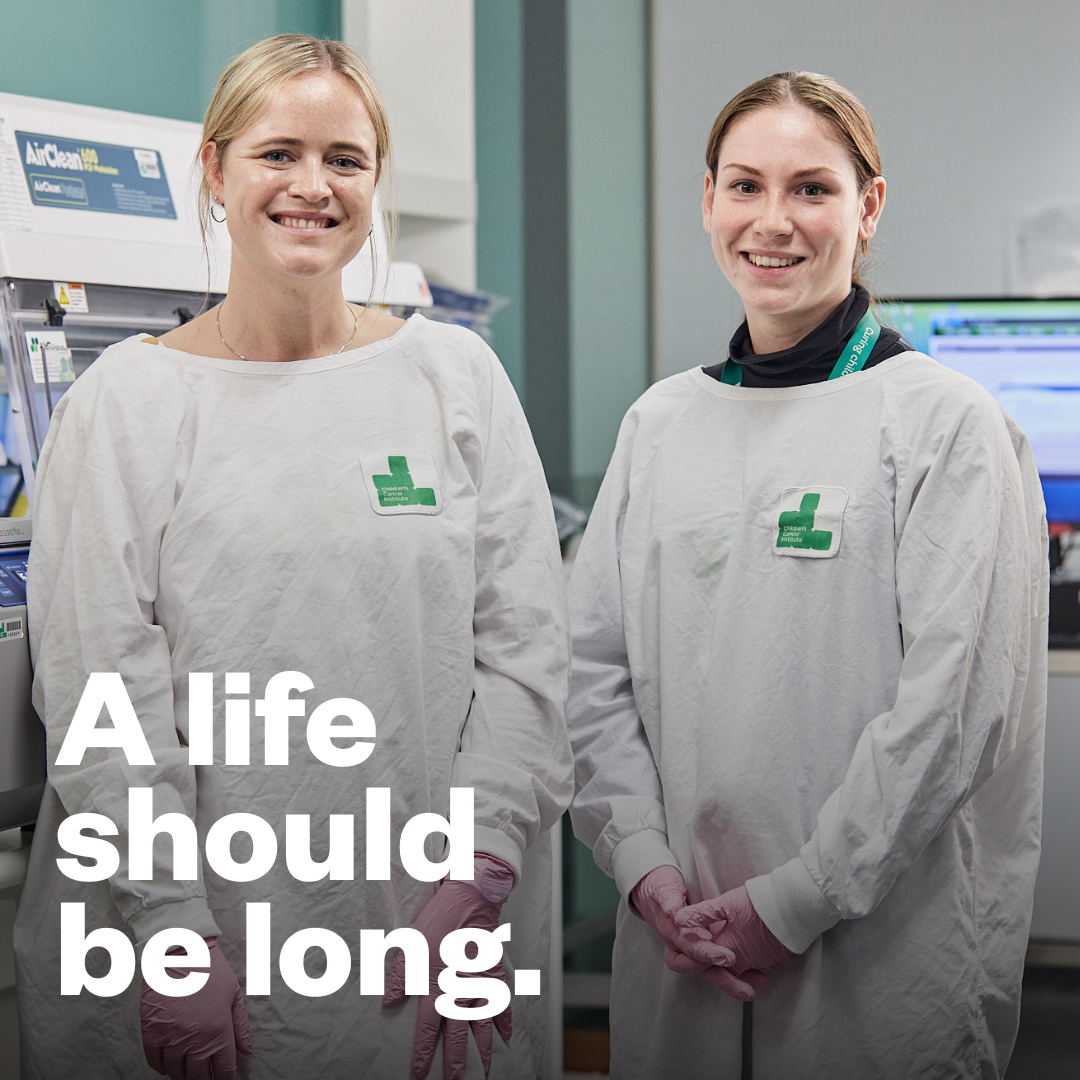Nearly all children with acute lymphoblastic leukaemia (ALL) initially respond to chemotherapy, however 10-15% of patients will later relapse. Relapsed cancer cells are often resistant to chemotherapy, and so are very hard to treat.
Research by our Leukaemia Biology Program, published last week in the prestigious journal Cancer Cell, has unravelled a fundamental mechanism behind resistance to an important class of drugs used to treat ALL, called glucocorticoids. This information could help design smarter, more effective treatments for ALL.
The study was led by Dr Duohui (Vincent) Jing and senior author Professor Richard Lock, along with local and international collaborators. It involved the detailed genetic analysis of 82 cancer and normal human cell types, as well as ALL cells that were either sensitive or resistant to glucocorticoids.
By integrating all the results and looking for patterns, they made an amazing discovery. They found that ALL cells that are resistant to glucocorticoids are ‘programmed’ differently to those that are sensitive. To use the jargon, there was a change in their “epigenomic landscape”.

What is the epigenome?
You may have heard of the genome, but what’s the epigenome? Well, you can think of the epigenome as the operating system that manages the genome.
The genome is the total of all the DNA in a cell. DNA exists as long strings of 4 different chemical units or ‘bases’ in varying combinations. DNA strings are wound around proteins (called histones) and packaged into chromosomes.
Within the 46 human chromosomes, the varying combinations of the four DNA bases form roughly 30,000 different genes. Genes are the blue prints for producing proteins – the basic building blocks and workhorses of the cell.
Every human cell contains the whole human genome. However, each type of cell, whether an eye cell or a liver cell or a skin cell, only uses a subset of genes – the ones it needs to carry out its own particular functions. That’s where the epigenome comes in. It tells a cell which genes to use, and which to ignore.
How does it work? Chemical compounds (scientists call them ‘marks’) are attached to certain DNA bases, or to the proteins that the DNA strings are wound around. These chemical marks affect the physical structure of the DNA, making some genes accessible to the machinery that creates proteins from them, and others inaccessible.
Epigenetic modifications determine resistance to glucocorticoids
All the epigenetic marks in a cell constitute its epigenome. The epigenome isn’t set in stone however. It can change, for instance, in response to environmental factors. When that happens, the genes that are accessible and inaccessible will change too.
Our researchers investigated the epigenome of normal lymphoid cells, i.e. the type of cell that ALL comes from. Normal lymphoid cells are sensitive to treatment with glucocorticoids. They looked at the genes that were accessible in these cells and those that weren’t. By doing this, they uncovered an ‘epigenomic landscape’ that only occurs in lymphoid cells.
What’s more, they found that malignant (cancerous) lymphoid cells (such as ALL) that are sensitive to glucocorticoids have the same epigenomic landscape as normal lymphoid cells. However ALL cells that have become resistant to glucocorticoids have a different epigenomic landscape. Their landscape looks like that of non-lymphoid cells.
To loop or not to loop
The team then used additional evidence to come up with a model that explains exactly how these different epigenomic landscapes control the response to glucocorticoids. In sensitive cells, glucocorticoid treatment causes DNA to form loops in certain regions, which makes genes in those regions accessible and ‘active’. In glucocorticoid-resistant cells on the other hand, these loops don’t form, and the genes stay inaccessible and ‘silent’.

Restoring the settings
Now that we know how some ALL cells are escaping glucocorticoid treatment, can we do something about it? Can we ‘restore the settings’ and make them sensitive again?
Scientists have in their toolkit drugs that can remove the chemical marks from DNA, thus re-setting the epigenome. When our researchers added one of these drugs together with a glucocorticoid called dexamethasone to dexamethasone-resistant ALL cells, they were able to partially restore sensitivity to dexamethasone.
These findings open up the possibility of overcoming glucocorticoid resistance, and thus developing more effective therapies for children with ALL.
Welcome to the jungle
“Epigenetic research in cancer is like exploring the depths of a jungle.”
This research has been beautifully illustrated by one of the authors of the research article, Julia Zhang. Her artwork was chosen for the cover of this issue of Cancer Cell.

Julia explains the inspiration behind her design:
“Epigenetic research in cancer is like exploring the depths of a jungle. Targets are tucked away within folds of DNA, either hidden (behind foliage) or twisted so tightly they can’t be made out.
“DNA structure is a vital consideration in targeted chemotherapy; it’s one thing to know what gene to target, it’s another to be able to find it and hit it.”
Read the research article
Top image: a pictorial summary of the results used to unravel glucocorticoid resistance in ALL
All images have been reproduced with the publisher’s permission















